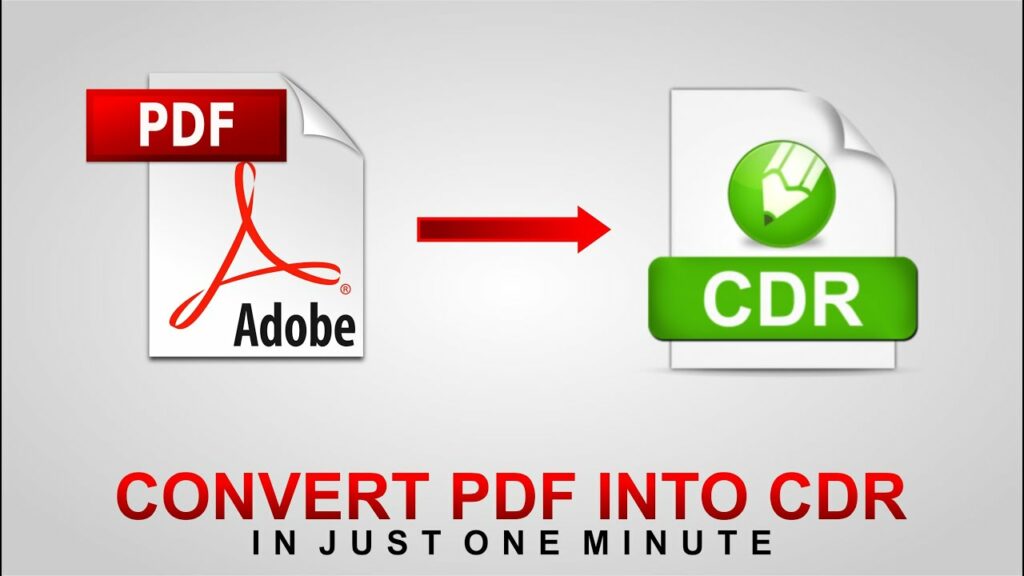Bridging Formats: A Comprehensive Guide on How to Convert a PDF File into CorelDRAW

Introduction:
CorelDRAW, a powerhouse in the world of graphic design, offers a versatile environment for creating captivating visuals. When dealing with existing content in PDF format, designers often need to seamlessly convert it into CorelDRAW for further editing, enhancement, or incorporation into larger design projects. In this extensive guide, we will explore the myriad methods and considerations involved in converting a PDF file into CorelDRAW, unlocking a world of creative possibilities and efficient design workflows.
I. Understanding the Conversion Process:
- PDF as a Universal Format:
- Portable Document Format (PDF) is widely used for document sharing and printing due to its platform-independent nature.
- Converting a PDF file into CorelDRAW allows designers to access and manipulate the content with the flexibility and precision that CorelDRAW offers.
- CorelDRAW as a Design Powerhouse:
- CorelDRAW’s expansive feature set makes it an ideal environment for graphic design, illustration, and layout creation.
- Converting a PDF into CorelDRAW ensures that designers can leverage the software’s capabilities to enhance, modify, and integrate existing content seamlessly.
II. Methods for Converting PDF to CorelDRAW:
- Importing PDF Files Directly:
- CorelDRAW provides a straightforward method for importing PDF files directly into the workspace.
- Navigate to the “File” menu, select “Import,” and choose the PDF file to open it as a new CorelDRAW document.
- Copy-Paste Method:
- In some cases, simple vector-based PDF content can be copied directly from a PDF viewer and pasted into a CorelDRAW document.
- This method may be suitable for basic elements but may not retain all attributes in complex designs.
- PDF to CorelDRAW Converter Tools:
- Several third-party tools and converters specialize in converting PDF files to CorelDRAW-compatible formats.
- Evaluate these tools based on the complexity of your design and the desired output quality.
III. Considerations During Conversion:
- Vector vs. Raster Elements:
- CorelDRAW excels in handling vector graphics. When converting a PDF, distinguish between vector and raster elements.
- Vector graphics are scalable without loss of quality, while raster elements may require careful handling to preserve clarity.
- Fonts and Text:
- Pay attention to fonts and text elements during conversion. Ensure that fonts are embedded or available to maintain typographic consistency.
- Manually adjust text formatting if necessary, as some variations may occur during conversion.
- Color Modes and Profiles:
- Check and adjust color modes and profiles to match the original PDF.
- CorelDRAW supports various color modes, and aligning them during conversion ensures accurate color representation.
IV. Step-by-Step Conversion Process:
- Open CorelDRAW:
- Launch CorelDRAW on your computer to initiate the conversion process.
- Import PDF File:
- Navigate to the “File” menu and select “Import” to open the PDF file directly in CorelDRAW.
- Adjust Document Settings:
- Confirm document settings such as page size, orientation, and color mode to match the original PDF.
- Review and Edit:
- After importing, review the document and make any necessary adjustments or modifications.
- Pay attention to text, images, and vector elements, ensuring they align with your design objectives.
- Save in CorelDRAW Format:
- Once edits are complete, save the document in CorelDRAW format (CDR) to preserve vector information and formatting.
- Export if Necessary:
- If you need to share the design with others or in different formats, consider exporting the document to PDF or other compatible formats.
V. Troubleshooting and Tips:
- Complex Designs:
- For intricate or complex designs, manual adjustments may be required post-conversion.
- Verify layers, groupings, and object properties to ensure a faithful representation of the original design.
- Gradients and Transparencies:
- Gradients and transparencies may behave differently between PDF and CorelDRAW.
- Manually adjust these elements as needed for optimal visual results.
- Software Versions:
- Compatibility between the CorelDRAW version and the PDF content can affect the conversion process.
- Ensure that both CorelDRAW and the PDF software are up to date for smoother conversions.
VI. Leveraging CorelDRAW’s Design Features:
- Creative Enhancements:
- Once the PDF is successfully converted, explore CorelDRAW’s extensive design features to enhance and elevate the content.
- Experiment with effects, layer styles, and additional elements to add a unique touch to the design.
- Seamless Integration:
- Merge the converted PDF content seamlessly with other design elements within CorelDRAW.
- This integration allows for cohesive and holistic design projects.
Conclusion:
In conclusion, converting a PDF file into CorelDRAW is a process that opens up a world of creative opportunities. CorelDRAW’s robust feature set and design capabilities, combined with careful consideration during the conversion process, empower designers to work with existing content in a dynamic and flexible environment. By following best practices, troubleshooting as needed, and leveraging CorelDRAW’s design prowess, designers can seamlessly incorporate PDF content into their projects and elevate their creative output with precision and efficiency.







